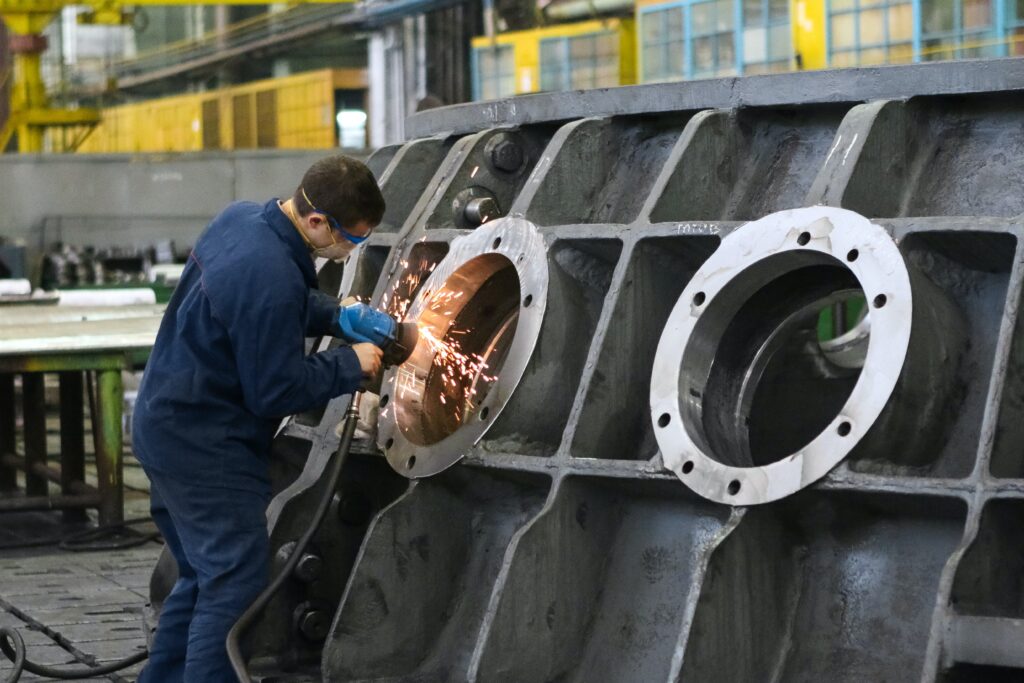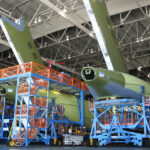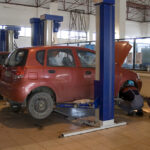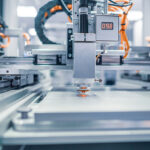In the world of aerospace manufacturing, precision is an indispensable element for creating a trustworthy aircraft. The selection of materials in aerospace manufacturing is governed by a myriad of factors, which predominantly include:
- Strength-to-weight ratio
- Durability
- Resistance to corrosion
Sheet metal fabrication has become a vital part of this industry because of its longevity, and its ability to tolerate humidity, pressure, and high-temperature changes during flight. The most commonly used sheet metals are:
- Aluminum
- Stainless steel
- Brass
Sheet metal fabrication appears to be becoming an important aspect of aircraft production since it allows for the simple shaping of materials into diverse forms while yet meeting the demanding standards of the aerospace industry.
This article will look at the several benefits of sheet metal fabrication in aerospace production, as well as its diverse uses.
Benefits of Sheet Metal Fabrication in Aerospace Manufacturing
#1 Precision and Accuracy
Sheet metal is well-known for its maneuverability – it is simple to bend and shape. This is why engineers like it for making accurate pieces.
The pieces of an airplane are precisely shaped and sheet metal aids in the accurate fabrication of pieces.
Airplanes must be well-shaped in order to move freely in the air. The form of the airplane influences its movement when flying.
This is why sheet metal is so crucial in the production of aeronautical components: it can be molded into a variety of forms.
Manufacturers may modify various sheet metals in whatever way they choose without compromising their quality.
These components are created using a variety of approaches, including:
- Laser cutting
- Bending
- Blanking
- Shearing
- Stamping
These sheet metal techniques are used to ensure accuracy and tight dimensionality in aerospace components.
#2 Durability and Strength
Airplanes rely on air pressure; therefore most of its components should be able to tackle any form of stress during flight. Sheet metal has a high strength-to-weight ratio, which means it is strong and durable.
This means it can withstand any stress or pressure when in use. Sheet metal has various types which differ in their properties, such as strength, weldability, machinability, and toughness.
These types are steel, copper or brass, aluminum, galvanized or cold-rolled steel, etc.
Alloys are resistant to all temperatures and high stresses, which makes them a great material for the aerospace industry. Aluminum, on the other hand, is the most ductile out of all sheet metals.
Whereas stainless or galvanized steel is known to have high durability and resistance to corrosion.
All these properties are ideal for aircraft manufacturing since their components require high strength and durability to withstand the temperature and pressure of the environment during flight.
#3 Cost-effective
Sheet metal is considered to be very cost-effective, particularly in aircraft manufacturing, due to its large-scale production and the ability to reuse metal leftovers.
Numerous sectors employ it in production since it is a reasonably inexpensive material, making it an excellent choice.
Sheet metal processing costs are also relatively inexpensive since fabricators can readily bend it with press brakes.
Some materials, on the other hand, need the use of particular molds to form shapes, which can be costly.
It also provides high-capacity production, which implies that producers may build components in large quantities at affordable costs.
#4 Customizability
Have you ever thought about why airplanes are built the way they are?
The form of an airplane’s wings allows it to lift off and fly.
Have you noticed how the wings are curled at the top and flat at the bottom?
This promotes quicker air movement from the top than from the bottom.
The design of the airplane influences its ability to fly smoothly and without turbulence in the air.
Precision and consistency are crucial for manufacturers since aircraft components rely on them to function properly.
Here is where customization comes into play: aviation professionals create the components with fine features and high tolerances.
Sheet metal fabrication allows producers to be inventive when creating custom-built components.
#5 Lightweight
The weight of the aircraft affects its overall functionality as well as its aerodynamics. Aircraft are designed to be lightweight, so the engines have less strain on them. They are lightweight yet strong to handle the various forces during flight.
Sheet metal, once fabricated, is extremely lightweight and strong, unlike other metals, which are strong but heavy in terms of weight. Aluminum and brass are the most used in aerospace manufacturing because of their great strength-to-weight ratio.
Applications of Sheet Metal Fabrication in Aerospace Manufacturing
Sheet metal fabrication is a critical component of the aerospace industry’s success.
Because of its perfect strength-to-weight ratio, sheet metal is used in the construction of the majority of aircraft today.
They are employed for a variety of purposes, including their durability, precision and customizability, and lightweight.
The aerospace sector also utilizes aluminum or brass sheets for safety reasons since they can endure any environmental change without rusting.
Following are some popular sheet metal fabrication uses in aircraft manufacturing:
#1 Aircraft Skin
Airplanes can be subjected to extreme situations such as high altitude temperatures ranging from -40 to -60 degrees Fahrenheit.
Turbulence, high air pressures, ultraviolet UV radiation, and wetness are all examples of this.
Because the aircraft’s skin is built of aluminum, it is strong enough to endure these environmental variables.
The aircraft skin is made of aluminum metal sheets, which serve as a protective covering and a membrane-like barrier against damage.
Moreover, aluminum is extremely lightweight and has corrosion-resistant qualities, making it desirable for the outer skin of an airplane since it impacts the plane’s aerodynamics, maneuverability, and flying.
#2 The Fuselage
Another big application of sheet metal in aerospace is the fuselage of the plane. The fuselage is the major structural component of the aircraft. It’s the body of the aircraft which holds the passengers as well as the cargo.
The fuselage also uses aluminum sheets which makes it strong and durable. The fuselage connects to every component of the aircraft and distributes the weight over its entire surface, which is also a reason why the fuselage needs to be lightweight as well as strong.
Manufacturers use sheet metal to design the fuselage because of its precise tube shape for better aerodynamics in flight. Plus, it also has the strength to withstand environmental factors such as temperature changes, moisture, and UV rays.
Apart from that, the fuselage is meant to protect the passengers in case of turbulence or collisions during the flight, which is why it needs to be strong.
#3 Wings
Sheet metal is also used to make aircraft wings. Wings are essential components of aircraft because they regulate maneuverability and overall utility.
Wings help planes to take off and stay in the air. This is owing to their unique shape. Sheet metal is essential for the precise structure of aircraft because aircraft engineers design them to meet specified criteria.
An airplane’s wings are made of aluminum, steel, and alloys, and their composition has a direct impact on the aircraft’s strength, electricity, weight, and maneuverability.
Furthermore, its corrosion resistance is a key reason why this material is used in the production of wings.
#4 Jet Engines
Aluminum and steel sheet form the backbone of airplane engines, lending their exceptional properties to propel mankind into the boundless skies.
Aluminum, with its feather-light weight and electrifying conductivity, is a prized possession for aeronautical engineers. Its innate ability to be fortified with additional alloys only adds to its charm, making it the ultimate choice for jet engines that demand both strength and lightness.
And then there is the illustrious stainless steel, the king of alloys. Its unparalleled resistance to corrosion and a rich blend of iron-carbon and 10% – 30% chromium make it a force to be reckoned with. Even in the harshest of temperatures, its mechanical properties remain intact, making it an indispensable element in the roaring engines that take us to the skies.
#5 The Landing Gear
The landing gear of an airplane contains wheels and brakes. They must sustain the full weight of the aircraft, thus they are designed to be durable and strong. As a result, the landing gear is built of several sheet metals, including steel, brass or copper, and titanium alloys.
Steel is renowned to be heavy and durable, allowing for a secure landing. They are also intended to absorb collision force for a smooth landing or takeoff.
Brass, on the other hand, has high strength and workability, as well as temperature and corrosion resistance, making it perfect for managing the high pressure of the earth while landing.
#6 Miscellaneous
Seat frames, doors, cabinets, and overhead bins – all bear witness to the remarkable resilience of sheet metal. It is the backbone of these essential components, holding them steadfast against the rigors of air travel and ensuring the safety and comfort of passengers.
Conclusion
Aerospace manufacturing, the pinnacle of engineering achievement, demands nothing less than the best. And in the realm of high-performing aircraft, sheet metal fabrication reigns supreme. With its ability to imbue form, function, and strength, sheet metal has become a crucial element in the aerospace industry.
In fact, sheet metal has become such a vital part of aerospace manufacturing that it is hard to imagine building planes without it.
To meet your business needs, our team specializes in sheet metal fabrication, CNC machining, and 3D printing. Reach out to us today to discover how we can assist you!






